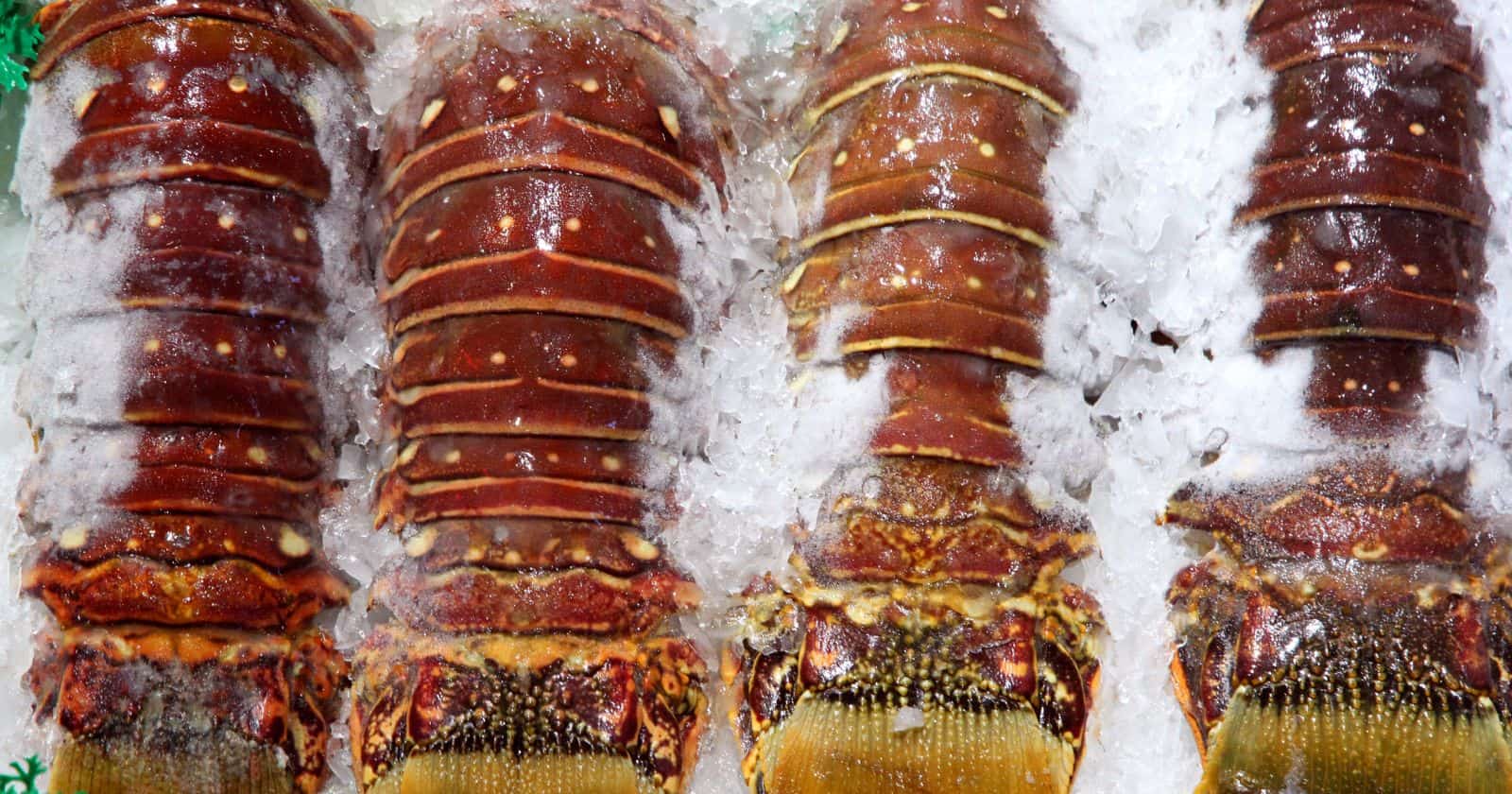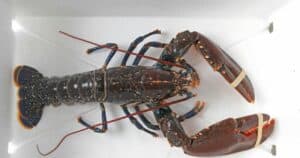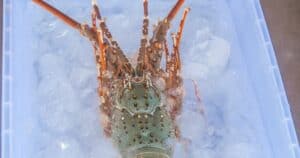Are you a seafood lover who enjoys indulging in lobster dishes all year round? If so, it’s essential to understand the proper way to store this delicacy to ensure its freshness and quality. The last thing you want is to ruin a delicious lobster meal due to improper storage techniques.
Frozen lobster meat can last for up to 3-6 months if stored at 0°F (-18°C) or lower, while frozen lobster tails can maintain their best quality for about 6-8 months in the freezer. According to experts from the University of Maine Department of Food Science & Human Nutrition and the Lobster Institute, properly prepared lobster can stay fresh in the freezer for up to 12 months. However, freezing live lobsters requires special care, as they should never be frozen alive.
In this guide, we’ll explore the various methods of storing lobster and share tips for keeping it fresh and delicious for as long as possible.
Frozen Lobster Storage Tips
To store frozen lobster properly, use commercial freezer bags or Ziploc vacuum bags, remove any air, or over-wrap with a laminated freezer wrap. Freeze at -18°C (0°F) or lower. Freezing cooked lobster meat is the most common method, and it can extend shelf life by up to 12 months.
Do not freeze live lobsters without taking proper steps. For best results, freeze uncooked lobster meat. Freeze the whole lobster or just the shell portions that contain edible meat.
To ensure you’re storing your frozen lobster correctly, follow these tips:
- Place lobster in commercial freezer bags or Ziploc vacuum bags to prevent freezer burn and to keep air and moisture out.
- Use laminated freezer wrap to provide additional protection against freezer burn.
- Ensure that the temperature of the freezer is set to -18°C (0°F) or lower, as this is the ideal temperature for frozen lobster storage.
- Freeze the lobster as soon as possible after it has been cooked to prevent bacteria from growing and preserve the meat’s quality.
- Lobsters should not be frozen alive. If you have live lobsters, you must first kill them by placing them in the freezer for about 30 minutes. Once they are dead, you can then store them in the freezer.
It’s worth noting that frozen lobster should not be thawed and refrozen, as this can cause a loss of quality and flavor. To thaw frozen lobster meat, place it in the refrigerator overnight, or immerse it in cold water for 30 minutes to an hour, changing the water every 10-15 minutes.
How to Freeze Lobster Safely
If you’re wondering how to freeze lobster safely, the good news is that it’s easy! The first step is to wrap the whole lobster or portions in moisture-vapor-resistant wrapping. It’s important to freeze lobster in the shell to help keep the meat from drying. Once you’ve dried the lobsters, wrap them tightly in a commercial freezer bag and freeze at 0 degrees F or lower for 9 to 12 months.
Now let’s dive deeper into the topic. Here are some specific tips for freezing lobster safely:
- If you want to freeze live lobsters, blanch them in rapidly boiling, salted water for one full minute. This will help kill any bacteria or parasites that might be present. Be sure to chill the lobsters in an ice bath for at least 15 minutes before freezing them.
- To keep the lobster meat moist and prevent freezer burn, pour milk or cream over it before placing it in a Ziplock freezer bag. This will create a protective layer around the lobster, ensuring that it stays fresh for as long as possible.
- When thawing frozen lobster, it’s best to do so slowly in the refrigerator. This will help prevent the lobster from becoming rigid or rubbery. Please plan, as it can take up to 24 hours to fully thaw a lobster.
Preparing Live Lobster for Freezing
Preparing live lobster for freezing is a great way to ensure you always have access to fresh, delicious lobster when needed. Blanch live lobsters in boiling, salted water for one minute to get started. Then, chill them in an ice bath for at least 15 minutes before drying and wrapping them tightly in a commercial freezer bag.
To maintain quality, it’s best to freeze uncooked lobster at 0 degrees Fahrenheit or lower for 9 to 12 months. It recommends putting live lobsters in the freezer for around 30 minutes before cooking, which puts them into hibernation.
When it comes to freezing lobster, there are a few additional tips to keep in mind. First, it’s best to freeze lobster as soon as possible after it has been caught. This helps to ensure the best possible flavor and texture. Additionally, you can either freeze the entire lobster or remove the shell portions that contain the edible meat.
If you choose only to freeze the meat, make sure that you remove any visible signs of sand or grit before placing it into the freezer. Finally, consider vacuum-sealing your lobster for even better results.
If you plan on freezing lobster regularly, it’s a good idea to invest in a high-quality freezer that can maintain a temperature of 0 degrees Fahrenheit or lower. Additionally, you should avoid opening the freezer unnecessarily, as this can cause temperature fluctuations that can impact the quality of your lobster. Finally, label your frozen lobster with the date and type of lobster to easily track what you have in your freezer.
Thawing Frozen Lobster
Thawing frozen lobster is easy and doesn’t take much effort. You have a few options, depending on how much time you have on your hands. The best way to thaw frozen lobsters is to place them in the refrigerator for 24 hours before cooking. This slowly allows the lobster to defrost and helps keep their texture and flavor intact.
If you’re short on time, you can also thaw lobster tails at room temperature or under cold water. This method is faster than the refrigerator, but keeping an eye on the lobster is essential to ensure they don’t over-thaw.
Another fast way to thaw lobster is by sealing them in a plastic bag, placing them in a pot of cold water, and refrigerating the bank for quicker thawing.
Once your lobster is thawed, it’s essential to cook it within a day or two to ensure it remains fresh. Lobster frozen for too long may lose some of its texture and flavor, so eating it as soon as possible after thawing is best.
Thawing lobster tails is similar to thawing whole lobsters, but timing and temperature are critical. Place them in a leak-proof container in the refrigerator for 24 hours to thaw lobster tails. Alternatively, you can melt them in a sealed bag in cold water, checking their temperature every 15 minutes to ensure it doesn’t rise above 40 degrees Fahrenheit.
Cooking with Frozen Lobster
Cooking with frozen lobster is simpler than you might think. Want to know how? Preheat your oven to 350°F and put the meat on a broiler pan. Brush with melted butter and a sprinkle of salt, and broil until the meat firms up. It should take between 4 to 6 minutes depending on the size. A plethora of lobster recipes that use frozen meat is available online.
Cold-cracked lobster, extracted under high pressure and instantly frozen in the shell, can also be used for cooking. Frozen lobster tails are another option. Here are several ways to cook lobster tails:
- Thaw the tails by placing them in a resealable plastic bag with paper towels in the refrigerator at least 24 hours before cooking.
- To expose the meat, slice the bottoms lengthwise for broiled lobster tails. Brush with melted butter, top with breadcrumbs, and broil for 10-12 minutes.
- Bring water to a full boil in a pot for steamed lobster tails. Add salt and place the seats in the pool. Cover with a lid, allowing them to steam for 7-8 minutes.
- To grill lobster tails, slice them down the middle using a pair of scissors. Brush with butter and season the meat before placing them on the grates.
Properly cooked lobster tails will have an internal temperature of 140°F.
Apart from broiling and grilling, boiled lobster is another popular dish. You may season the boiling water with herbs or add vegetables to the pot. The lobster claws should take about 8-10 minutes to cook, while the tails can take up to 12-15 minutes.
Lobster bisque is another popular recipe. You can use frozen lobster meat and shells to make a rich lobster stock, which forms the base for the bisque. Sautee onion, celery, and carrots until golden brown; add tomato paste and cook for a few minutes.
Then add the lobster stock, heavy cream, and sherry wine. Simmer on low heat, blend the mixture using a blender, and pass it through a sieve. Add some more cream before serving, and enjoy the wholesome lobster bisque.
How to Recognize Spoiled Lobster
Have you ever wondered how to recognize spoiled lobsters? It’s essential to know the telltale signs before you take a bite. Watch for these four common indicators: a foul odor, discolored meat, cottage cheese-like texture, or a slimy texture. If you notice these signs, it’s best not to consume the lobster to avoid food poisoning.
While the signs of spoiled lobsters are clear, frozen lobsters can be a different story. If you were wondering how long lobster can be frozen, it’s important to note that it can last up to six months in the freezer. However, consuming it within three months is best to ensure the best flavor and quality.
When storing frozen lobster, it should be tightly wrapped in plastic or aluminum foil to prevent freezer burn. Keep it in the back of the freezer for the best results where the temperature is most consistent. When thawing frozen lobster, it’s essential to do it in the refrigerator, not at room temperature. This will ensure that the lobster stays fresh and doesn’t develop bacteria.
If you plan to cook your frozen lobster, remove it from the freezer and thaw it the day before. This will ensure that it’s fully melted and ready to cook. Once you’ve cooked the lobster, storing any leftovers in the refrigerator for no more than two days is essential. This will ensure that the meat stays fresh and safe to consume.
Alternative Methods for Storing Lobster
Various alternative methods exist to keep these creatures alive and well before cooking them up in a delicious dish. Here are some options to consider:
- Damp newspaper or fresh seaweed – To store live lobsters in the fridge for up to 24 hours, wrap them in damp newspaper or fresh seaweed and place them in the coldest part of the refrigerator.
- Frozen gel pack – Lobsters can also be stored in a bag or container with a frozen gel pack to keep them alive and calm.
- Cooler – If you’re on the go, pack live lobsters in wet newspaper or seaweed (if available) and store them in a cooler.
Cooked lobster requires different storage techniques to maintain freshness:
- Shallow airtight container – Put cooked lobster in a shallow container before storing it in the fridge.
- Heavy-duty aluminum foil – Another option is to wrap cooked lobster tightly in heavy-duty aluminum foil before storing.
- Avoid closed Tupperware or sealed bags – These can suffocate the lobsters, so it’s best to use alternative methods for storing cooked lobster.
Remember, the key to storing lobsters is to keep them alive (if you’re holding live lobsters) and relaxed. Using one of these alternative methods above, you can store lobsters for fresher seafood dishes.





